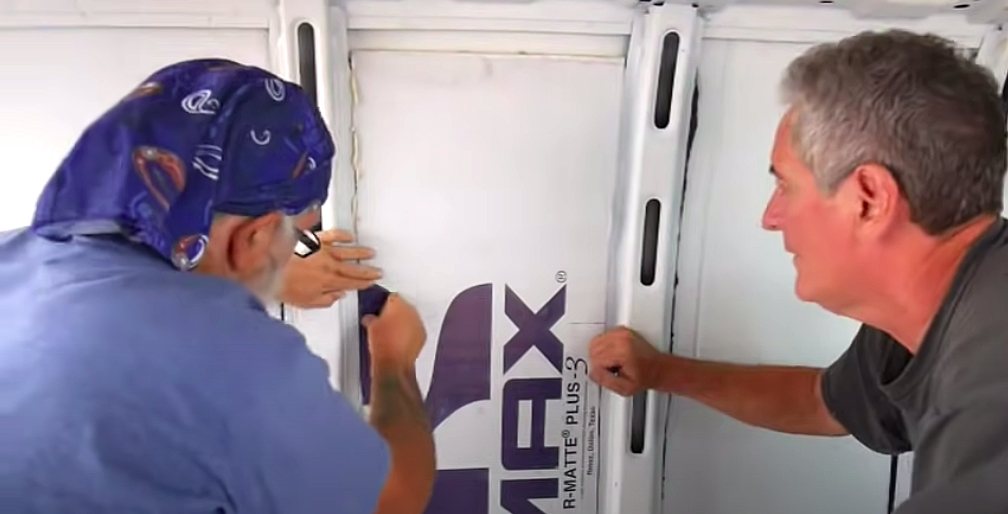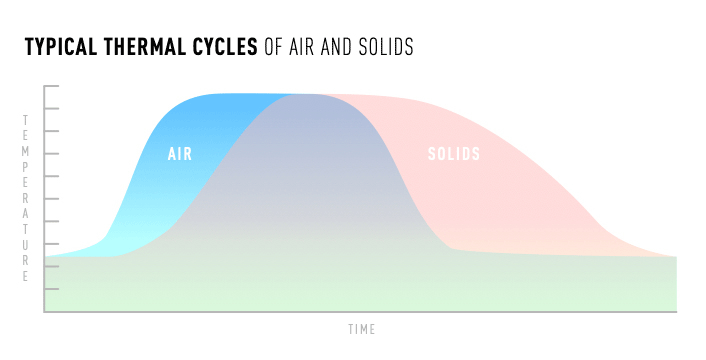
We all want to keep our rigs warm when it’s cold and not so warm when it’s hot. Fickle humans. One answer—other than chasing perfect weather—is insulation.
Actually, insulation is only a partial answer, a limited answer. There’s only so much that insulation can accomplish. It can slow down temperature change but not stop it. That’s especially true with something as leaky as a vehicle. In addition to the air vents in the dash, and less-than-perfect door seals, vehicles have small vents built in to equalize internal and external air pressure. When you have the windows closed and the heater or air conditioning blowing, that extra air has to go somewhere, so exhaust vents. Even something as insulated and airtight as a cooler will eventually lose its cool. The laws of physics don’t care what happens to your beer.
To get seriously brainy for a moment (ow) the Second Law of Thermodynamics says that “when two initially isolated systems in separate but nearby regions of space are allowed to interact, they will eventually reach a mutual thermodynamic equilibrium.” In other words, when hot and cold interact, hot cools down and cold heats up until they’re the same temperature. Whether that temperature is closer to hot or cold depends on which there was more of to start with. In the case of your vehicle, the volume inside is minuscule compared to the volume outside. Outside will win the temperature arm wrestle, even with piles of insulation. (I think the Fourth Law of Thermodynamics states: Almost nothing is ever the temperature we want it to be without human intervention.)
HOW DIFFERING TEMPERATURES INTERACT
There are three ways hot and cold can interact with each other: radiation, convection and conduction. Each requires different insulation strategies.
Let’s look at what’s happening on a hot day with an empty, bare walled cargo van. The sun shines on the van, heating the exterior via radiation. Sunlight also comes through the windows, heating the dash and seats via radiation. The exterior and heated dash then radiate heat into the rest of the interior. That heat spreads through the van first via convection through the air circulation and eventually via conduction as hot objects warm other objects they’re in physical contact with.
In this scenario the first strategy is to block the radiation. Shade from a tree, a building, a mountain, tarps, roof-mounted solar panels… whatever. Keep the sun off the van and keep it from shining in the windows.
The second strategy is to reflect it away with shiny stuff. Mylar, aluminized shade cloth, Reflectix, solar panels, a highly polished paint job…
The third strategy is insulation to block thermal transfer from the hot van exterior. There are many types of insulation, some more suitable for vehicles than others. More about those in Part 2 of this article.
The fourth strategy is air movement and venting. Send hot air out of the interior so the van doesn’t become an oven.
The situation is reversed in cold weather—you want to keep the heat in—so the strategy is partially reversed.
That sunlight you want to keep out in summer? Invite it in during winter. Position your rig so as much sunlight as possible comes in the windows. Let it shine on hard, dense objects that are able to hold onto heat for long periods after the sun is gone. Then, when it’s dark, cover the windows to keep heat in.
The welcome breeze in summer is your enemy in winter. Park out of the wind if you can, and if it doesn’t put you in the shade. Cover your vehicle’s climate control vents to block drafts. Allow in only enough fresh air to replenish oxygen, and let out only enough warm air to remove moisture.
Meanwhile, insulation in the roof, floor and walls works the same way in winter, slowing thermal transfer from warm areas to cold ones.
Everything in your rig eventually becomes the same temperature as its surroundings. Air changes temperature rapidly, everything else more slowly. That’s why in the summer your rig can feel too warm for hours after the evening air has cooled down. You’re surrounded by still-warm objects. And it’s why your rig can still feel cold even with sunlight and a heater warming the air. You have a space filled with still-cold objects.

Most insulation is designed to be used in buildings. The thing is, buildings are stationary (usually). They don’t experience the stop-start-right-left-up-down motions of vehicles. They don’t drive along bumpy roads. So some insulation is ill suited for use in vehicles. For example, looser, fluffier types will compress or collapse, causing them to lose effectiveness. This loss of effectiveness is called thermal drift. And some insulation attracts moisture, which not only reduces effectiveness but also invites mold, insects and corrosion.
What’s more, since the insulation industry is geared toward building construction, it’s hard to buy some types of insulation in the relatively small quantities needed for a vehicle. You might want to go halfsies with another nomad, or check places like Habitat for Humanity ReStore for leftover insulation.
All vehicles come from the factory with a little insulation, at least in the driver compartment—headliners, door panels, floor coverings—otherwise they’d be unbearable to drive.
An experiment: On a day that’s too hot or too cold, rest your hand on the vehicle’s exterior. Then do the same with the headliner, door panels and floor. There’s a difference, right? That’s the vehicle’s factory insulation at work. Now compare them to the windows. Yikes.
Yes, you’d want to insulate the bare cargo areas of commercial vehicles and cargo trailers, but with passenger vehicles, like minivans and SUVs, it’s a question of whether the cost and trouble of adding additional insulation to the roof, walls and floor would reap any noticeable improvements. Insulating the windows would make the most difference.
In the second installment of this article we’ll get into the various types of insulation along with their pros and cons. In the meantime, stay as comfortable as you can.

2003, we converted a 1996 Ford CF8000 commercial truck to our concept of an ExpeditionVehicle.
Our box is 7w x 12 l x 7h, about 700cf.
.
I insulated with adhesive-back acoustic against the outer wall, a gap, then one-inch pink-board, another air-gap, then two-inch foil-side poly.
The floor base is one-inch pink-board with half-inch marine plywood painted on all surfaces to seal.
The visual floor is bamboo surrounding slate.
.
We deliberately avoided leaks with No! Holes! In! The! Roof!.
.
Our windows are 3612 — three feet wide by a foot tall — dual-pane sliders designed for a stand-still house.
We mounted these at our eye-level standing inside, about eight feet above pavement.
.
Summers are up rough logger tracks to remote mountain lakes.
Winters on isolated Baja beaches.
.
We heat with *one* Wave 3 catalytic heater on LOW… if the outside temperature dips below 40°.
Any warmer outside, and our three RedHeelers plus two adults are enough to keep us very comfortable.
.
If the weather turns hot:
We gain elevation.
We head north.
We go to the coast.
.
Nearly two decades full-time live-aboard, this works for us.